Check here to see the local birds who visit the Nahant Public Library. Learn about the birds who stop by. We hope to update the bird gallery as often as we can. We’d like to thank the Nahant Cultural Council and the Mass. Cultural Council Grant for making this possible.
Bird Gallery:
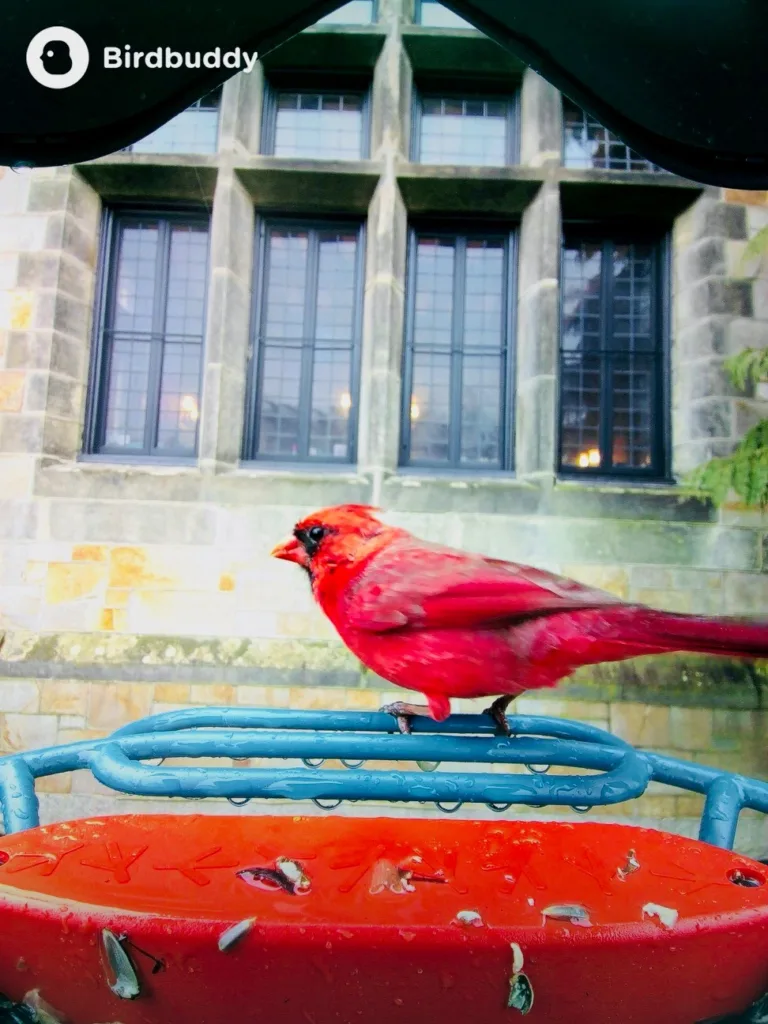
Northern Cardinal.
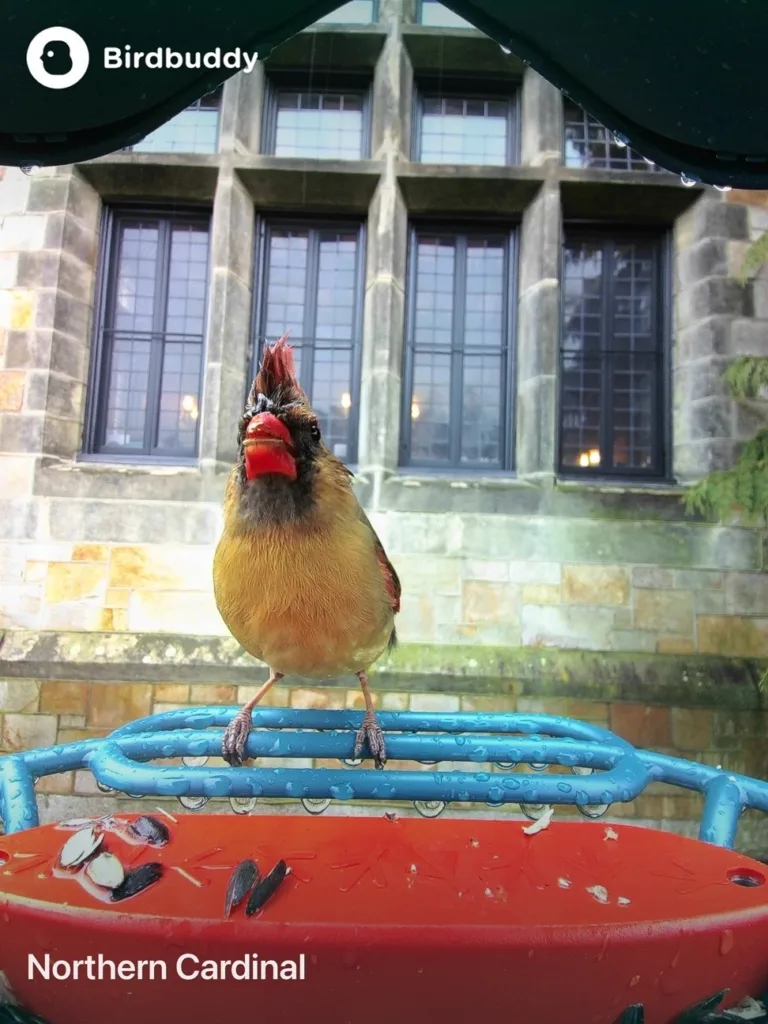
Northern Cardinal. From the Birdbuddy app: Did you know northern cardinal pairs share song phrases? In this case, it is the female whose song is longer and more complex. In wintertime, camouflage definitely isn’t their primary aim, as they keep their distinctive red plumage even in the colder months. They are well-loved, as evidenced by the fact they are the state bird of seven states! The oldest recorded northern cardinal was a female that was 15 years and 9 months old.
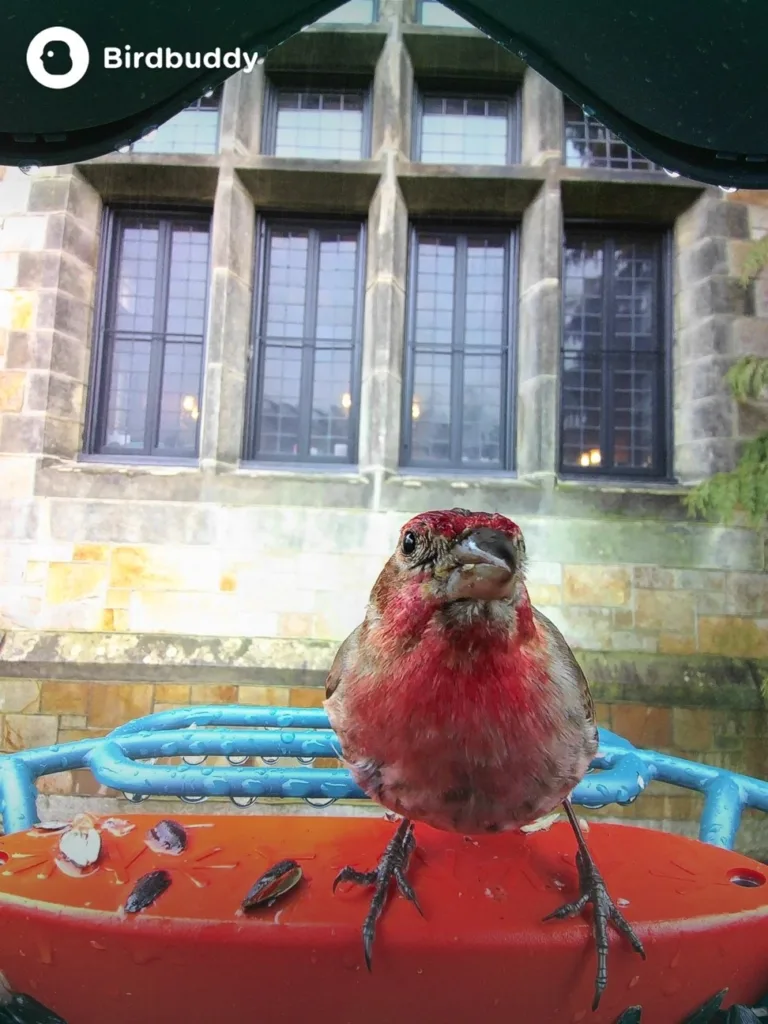
House Finch. From the Birdbuddy app: Did you know that the house finch’s scientific name Carpodacus comes from the Greek for fruit-eater? You know what they say about an apple a day…No wonder their expected lifespan is around nine to ten years! These birds have a great memory and can remember exactly where they passed a source of food, so if you make a good impression, chances are they’ll come back for more!
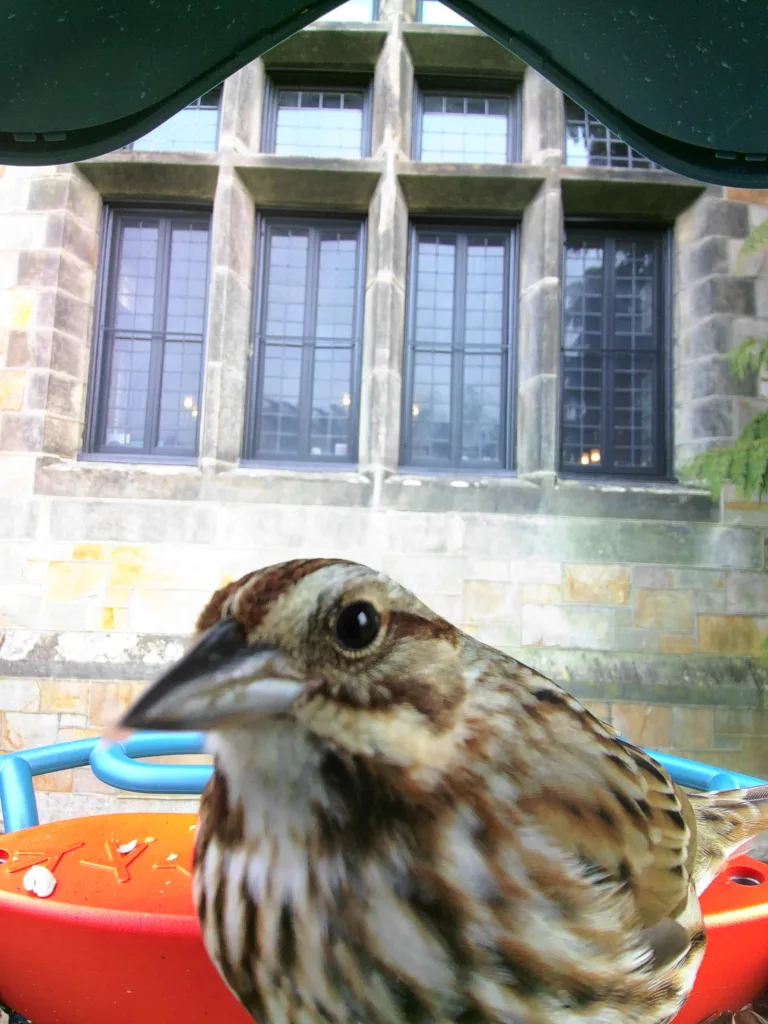
Song Sparrow. From the Birdbuddy app: Keep your ears open: On spring mornings, these guys sing every eight seconds on average! They have one song that they can vary, so you can hear between six and 20 different melodies. They are a beautiful sight to see, too. They forage on the ground and do a little dance as they kick away bits of debris with their legs while hopping forwards.
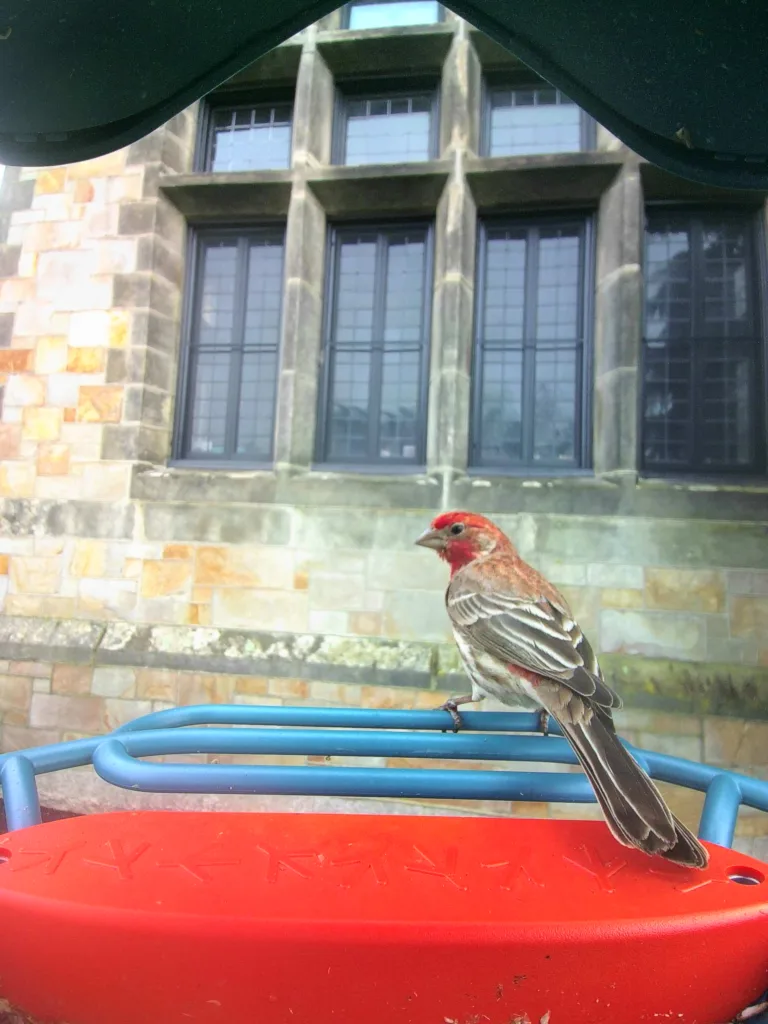
Pine Grosbeak. From the Birdbuddy app: The pine grosbeak loves pines, as you can probably tell from its name. Its scientific name “pinicola” also means “pine dweller.” Fruit will also do. Winter flocks set up shop next to a fruit tree and don’t budge until they’ve eaten every last piece! They are the largest of the finches and apparently the slowest. They are so chill that Newfoundlanders affectionately call them mopes.
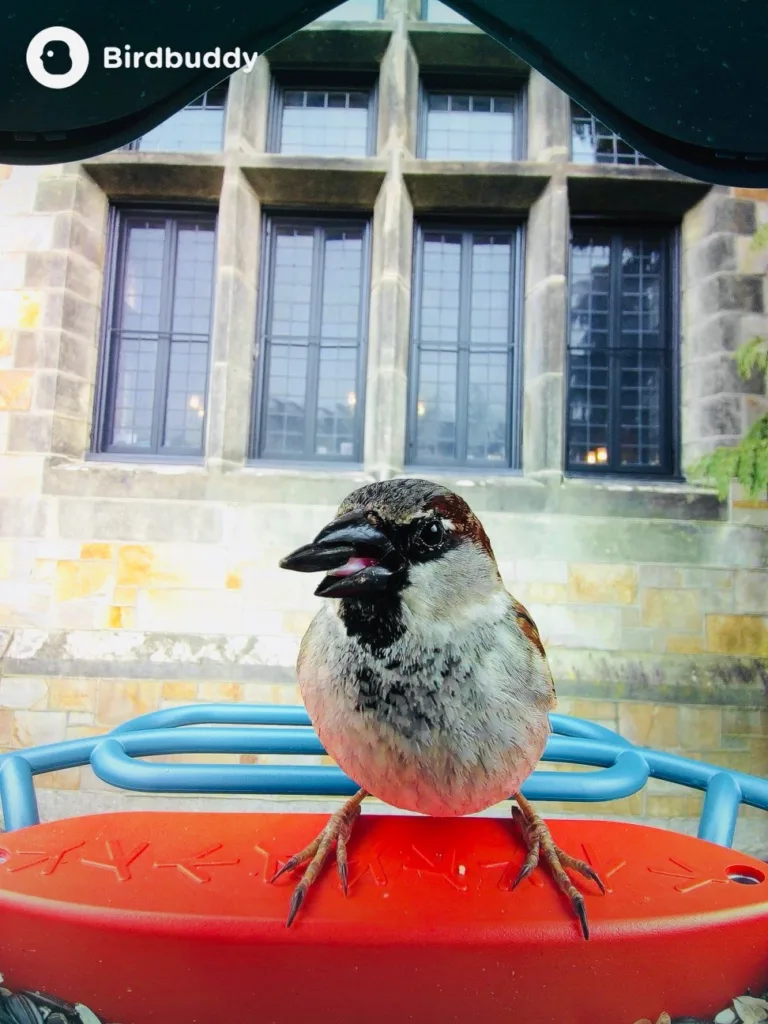
House Sparrow. From the Birdbuddy app: House sparrows have long been our companions, living alongside us since the Stone Age and are still found in places where humans live. They are social birds that roost in groups and engage in social singing, meaning multiple birds will call together from bushes, like little sparrow choir. Cleanliness is important and you will frequently see them taking dust baths.
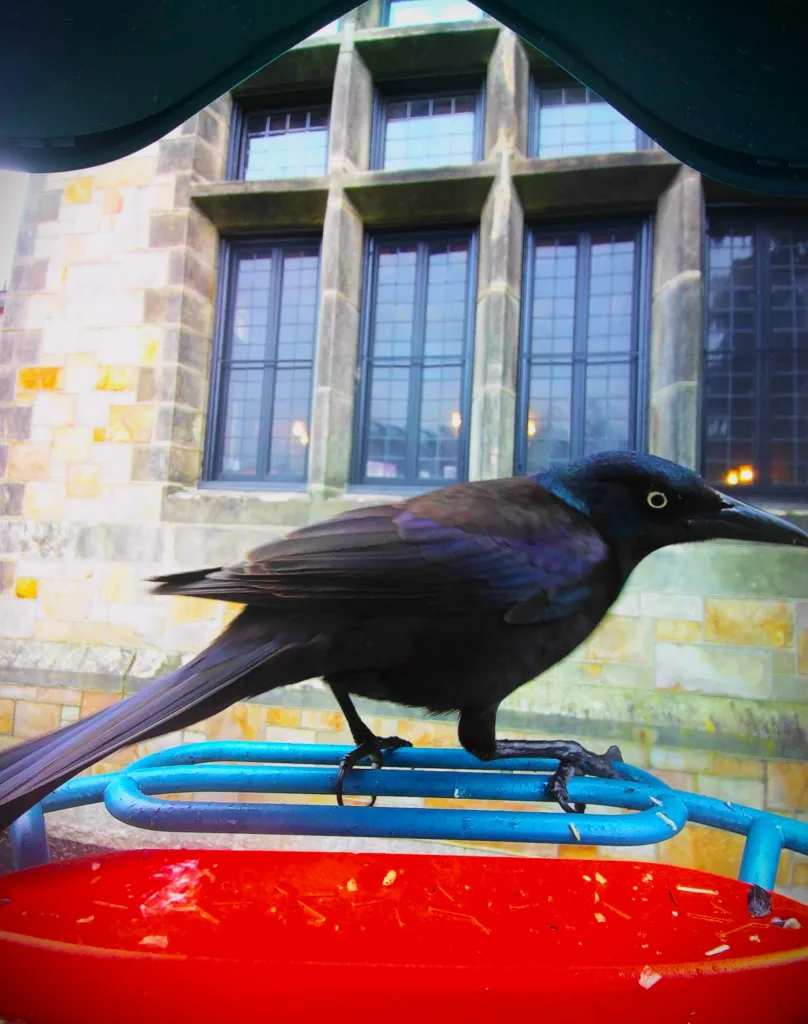
Common Grackle. From the Birdbuddy app: These noisy birds will come to your feeders but usually eat from the ground and sometimes maybe even steal food right from under other birds’ beaks! They engage in a practice called anting – this means they allow ants to walk all over their body and secrete formic acid, which is thought to kill parasites. Ants aren’t their only means of pest control, though they also use walnut juice, mothballs, lemons, limes and chokecherries.
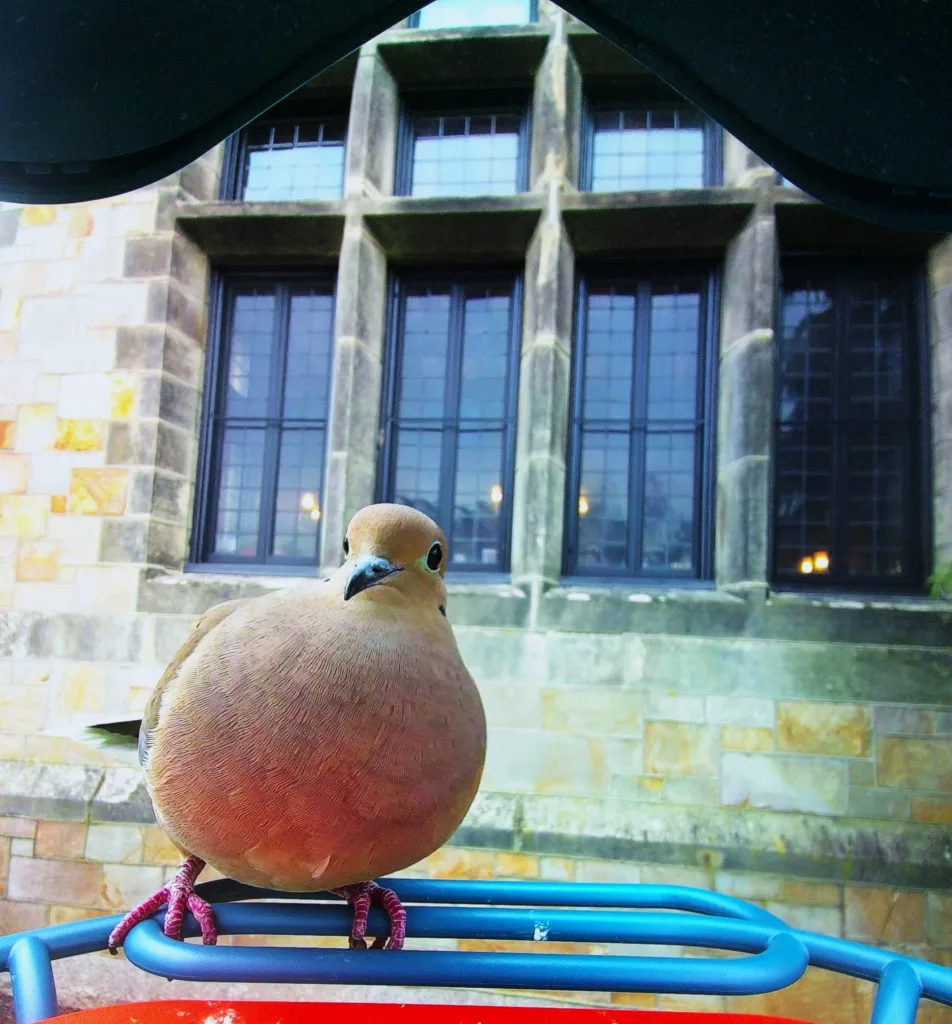
Mourning Dove. From the Birdbuddy app: Did you know that the Mourning Dove can reach speeds of up to 55 miles an hour? All that flying around requires energy and they get it by eating lots and lots of seeds! What they can’t eat immediately, they store in their crop, a special pouch in their throat. The record for seeds stored in a crop on a single day Is 17, 200 bluegrass seeds!
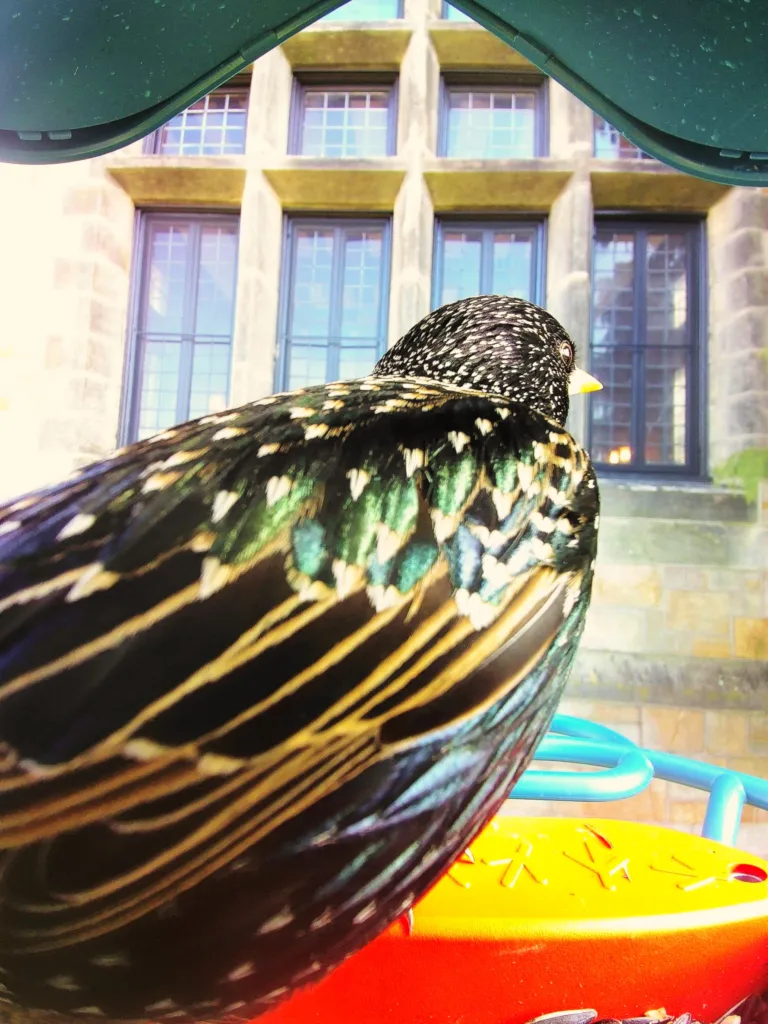
Common Starling. From the Birdbuddy app: Chances are you’ve seen big, spectacular moving clouds of birds flying in breath-taking formations. They were probably starlings and that maneuver is called a murmuration. They perform them before roosting. These European birds were brought to New York in the 1890’s by Eugene Shieffelin and his friends, who released hundreds of birds in an attempt to introduce all the species mentioned in Shakespeare’s works.
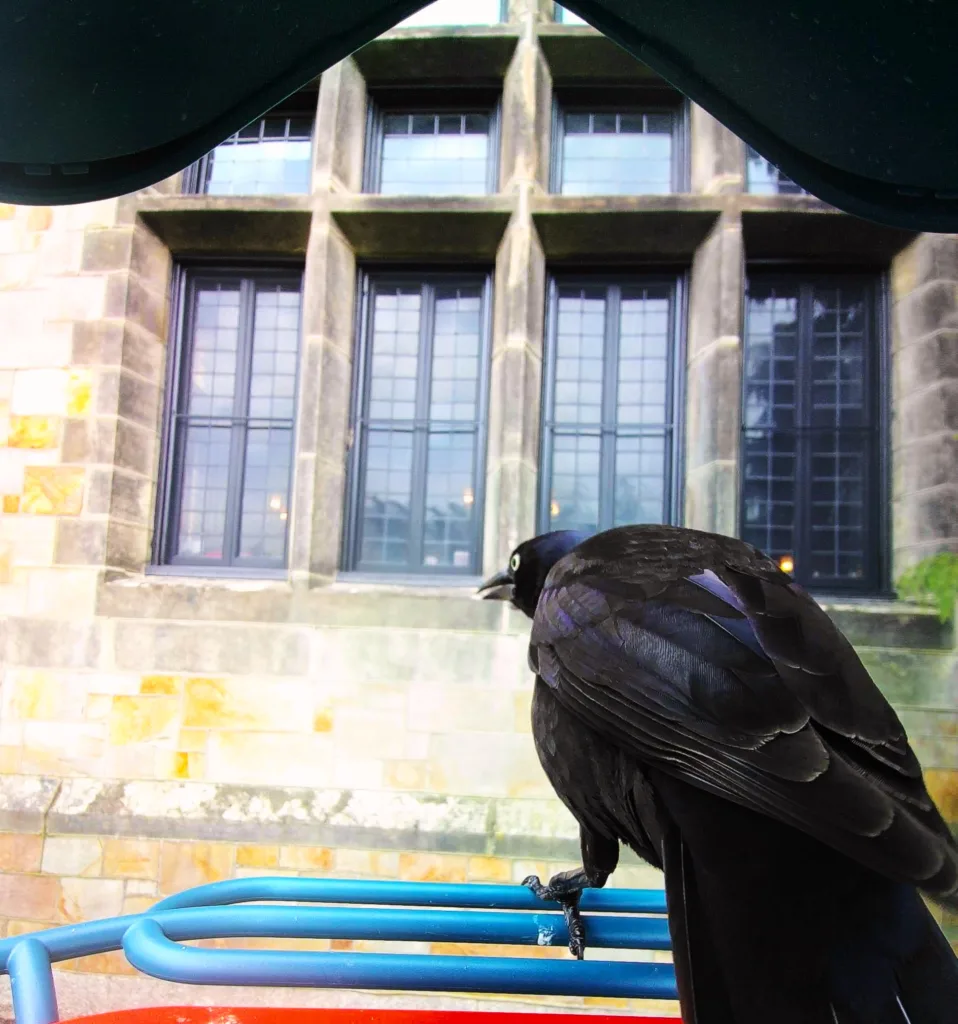
Dark-Eyed Junco. From the Birdbuddy app: Did you know that Dark-Eyed Juncos grow their own jackets to protect them from the snow? In winter, their coats can be up to 30% heavier! Sounds like an awesome superpower to have in winter, right? They are here for a good time and a long time and can live to be 11 years old. For reference, the average lifespan of a bird that survives being a fledgling is about 3 years.
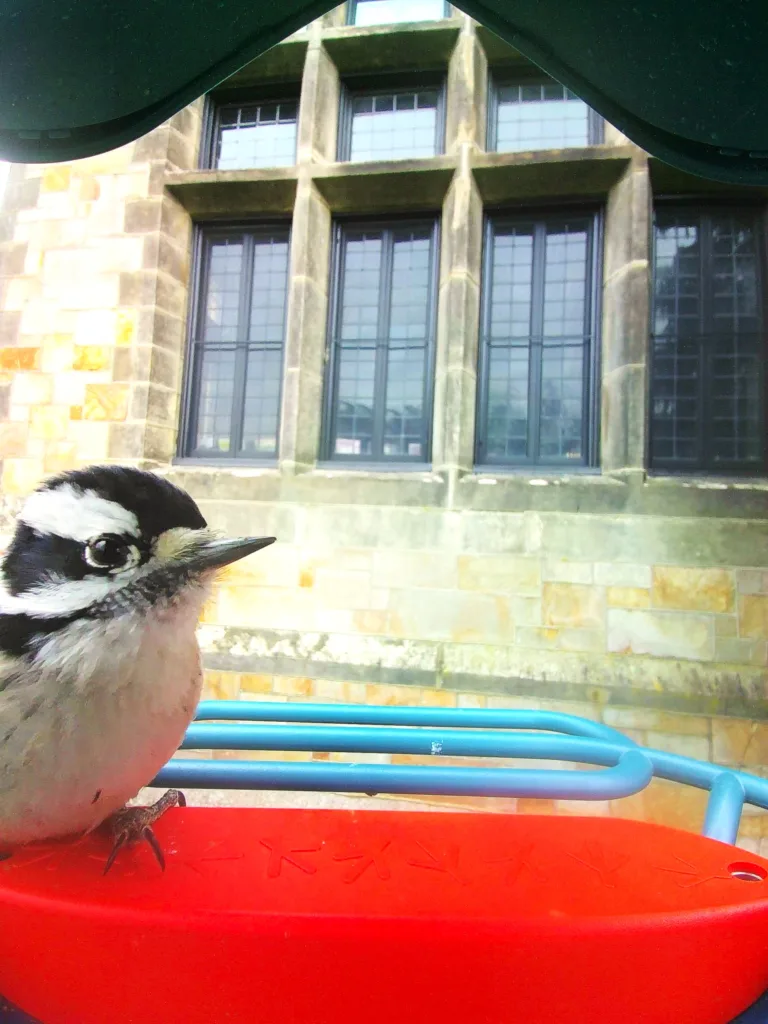
Downy Woodpecker. From the Birdbuddy App: Downy Woodpeckers are the smallest North American Woodpecker! They don’t sing. They drum. May think they do that to find food, but the birds are actually pretty quiet when they feed. Hearing a drumming inside your walls? It might be one of these guys! They’ve been known to nest inside building walls.
